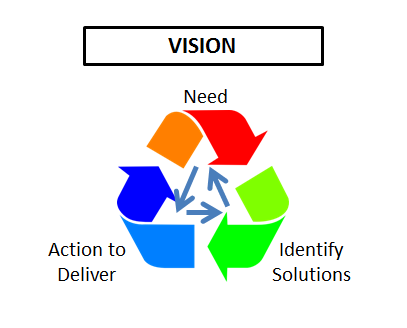 [Editor’s note: this post was written by Dr Darren Smart, Strategic Manager Operations, Libraries, Registration and Archives, Kent County Council, and is a ‘how to’ guide adapted from his recent workshop at CILIP’s Public & Mobile Libraries Group conference “Public Libraries for Social, Digital and Economic Inclusion”.]
[Editor’s note: this post was written by Dr Darren Smart, Strategic Manager Operations, Libraries, Registration and Archives, Kent County Council, and is a ‘how to’ guide adapted from his recent workshop at CILIP’s Public & Mobile Libraries Group conference “Public Libraries for Social, Digital and Economic Inclusion”.]
I was invited to share my thoughts on redesigning library digital services at the PMLG conference, as people knew I had personal experience of this. My presentation synthesised the learning gained through SCL’s Digital Leadership programme and years of practical experience, working in a number of different library services. Anyone who is faced with complaints or requests from users, or perhaps new members of the team who question why things are done in a certain way, might find that triggers a need to look at digital services overall, so I hope you find this approach of use.
First: review
The first step is to take stock: what is the current situation? Initially, review your service’s offer against the SCL Digital Offer, both the basic and stretch elements, noting any extras you already do. Then drill down further into each aspect of your digital service (e.g. online catalogue, reserving, e-book offer, etc) to identify what works well and what does not (list as: pros and cons, as well as noting why that is the case). Finally, for each aspect that is not working well, identify the key drivers and stakeholders.

In all cases, staff engagement will be a key factor, both as a driver and as stakeholders. An internal communications programme focussing on hearts and minds is vital for effective change. Identifying benefits to the customer is often an effective approach. Staff training is also critical, equipping your team with the skills and confidence they need.
Undertaking a ‘no blame’ skills audit for all staff, to identify skills gaps at the start of your redesign, is good practice. Moving forwards, every new digital initiative should include staff training in the planning phase. Remember, many hands make light work; informed and motivated staff are the best advocates to your customers.
Action plan
The next step is to start formulating your action plan. This should include both ‘quick wins’ and ‘strategic goals’ identified by reviewing the ‘Cons List’ and the associated driver/stakeholder analysis.
Quick wins are low risk/cost and ideally can be done as part of ‘business as usual’, e.g. promoting e-stock or improving website layout. Whilst they often have low impact, the effect is cumulative and quick wins establish momentum, building the confidence of key stakeholders by creating a track record of success.
This paves the way for the ‘strategic goals’ where both the risks/costs and rewards are greater, thus making stakeholder engagement more challenging. Strategic goals usually involve making a successful business case to gain political buy-in and the necessary funds/resources for the project.
The following is an effective model for doing this:
- gather the evidence
- identify the need
- possible solutions
- actions required to deliver solutions
- cost benefits
- build the case
- identify the key stakeholders
- align the evidence to the key drivers for each stakeholder
- lobby through stakeholder engagement, 1 to 1s and pre-meets
- once convinced you have enough key stakeholders on board - make the pitch
Keeping the momentum
The final stage is ‘Keeping the Momentum’ and remember: success breeds success. There are 3 main elements to this:

- agile planning: create a cycle of continuous improvement (see image above)
- demonstrate impact
- gather both quantitative (statistics) and qualitative (case studies showing impact on/outcomes for an individual) evidence
- use this to create a positive narrative and thus sell your vision
- innovation
- learn from other library services; ‘plagiarise’ good practice
- horizon scan: look to other sectors, not just what is standard practice now but also to identify possible future opportunities
Conclusion
In conclusion, this approach to redesigning the library digital offer has proven to be successful for me and hopefully will serve you equally well. For more thoughts on the digital aspect of public libraries, please follow me on Twitter at @darrentheviking.
------------------------------------------------------------------
Please note, this is a guest blog. Views expressed here do not necessarily represent the views of DCMS or the Libraries Taskforce